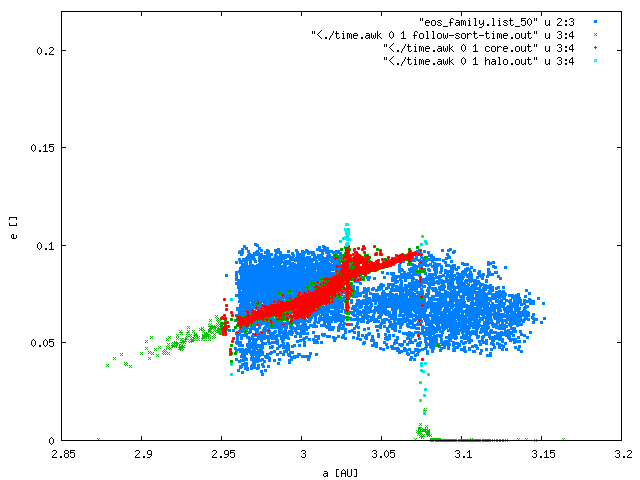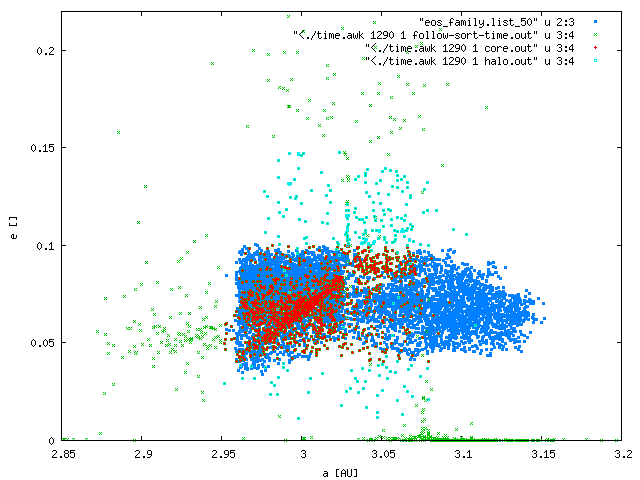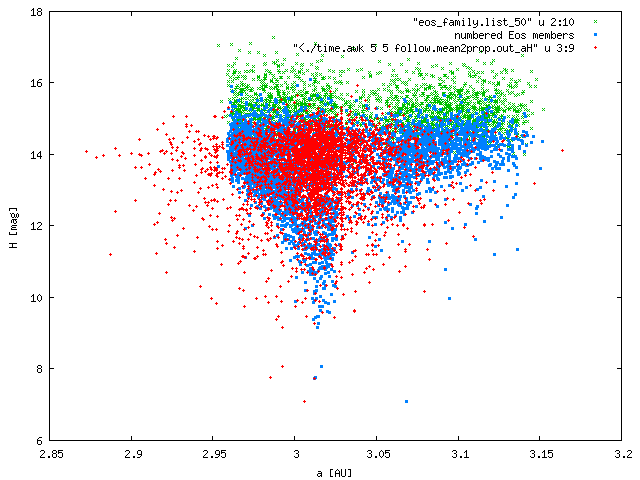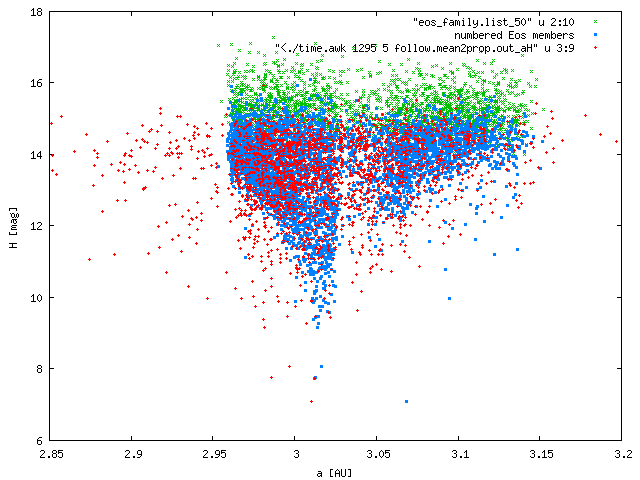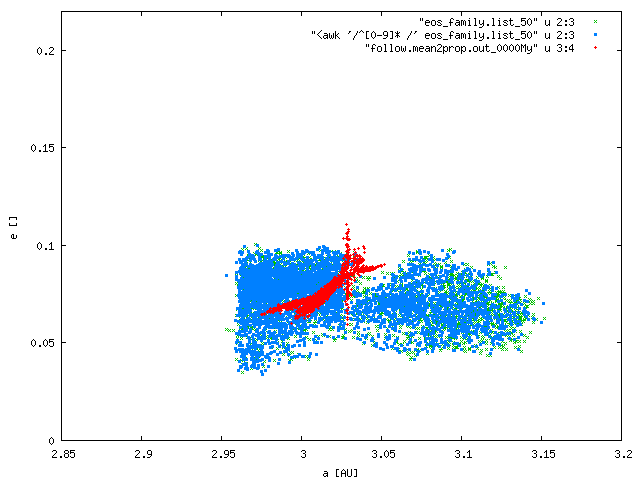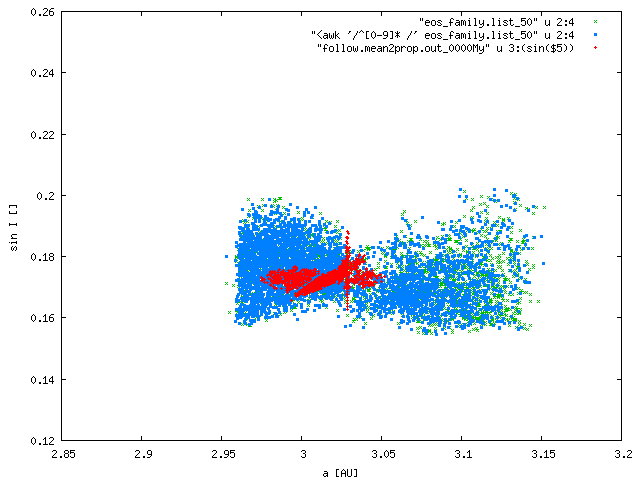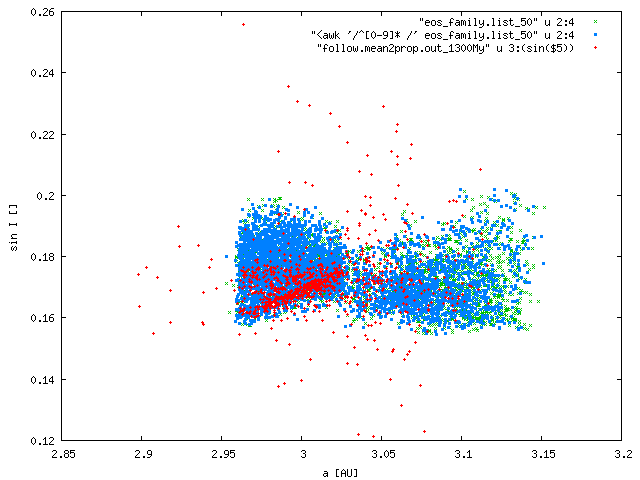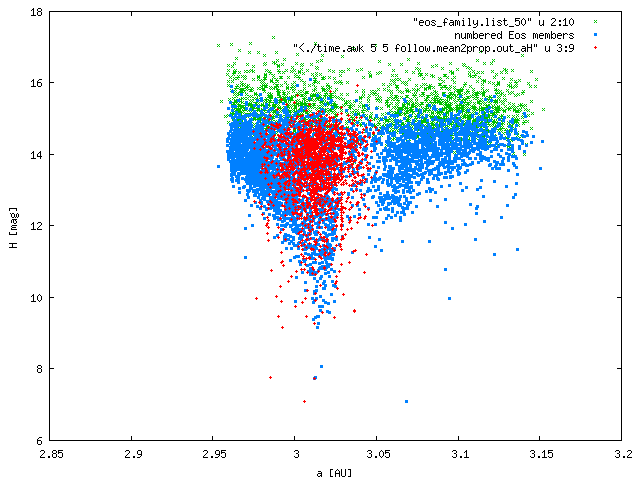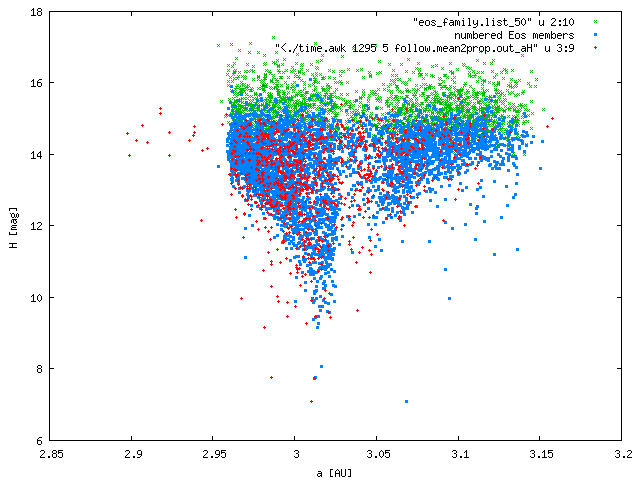
Eos family halo 2
+ upto 20 % (!) of bodies can escape from the Eos-core and create a HALO
within 1.3 Gyr ONLY via J9/4 resonance capture/release/drift,
<- this includes bodies INITIALLY located inside the resonance
-> the OBSERVED ratio is also approx. ~ 20 % (!)
=> NO MIGRATION is needed to create the halo!
(btw. this may be even used to independently constrain the AGE of the family)
Note: I use a simple criterion to distinguish the halo and core of the family:
everything inside a SMALL box a = 2.96-3.16 AU, e = 0.04-0.10, sin I = 0.15-0.20 is the core,
while the bodies located in a LARGE box a = 2.96-3.16 AU, e = 0.01-0.15, sin I = 0.12-0.24
(and NOT contained in the small box, of course) constitute the halo.
Note 2: There is an artefact in proper eccentricity computation beyond a = 3.08 AU,
but it does not affect results significantly.
The same figures, but with v_max = 100 m/s only, i.e. more compact family at the beginning
(maybe, it is TOO compact, since the escape velocity from the parent body is v_esc =~ 120 m/s):
The corresponding dependence number of bodies N(t) vs time and the halo/core ratio:
| v_max = 400 m/s |
v_max = 100 m/s |
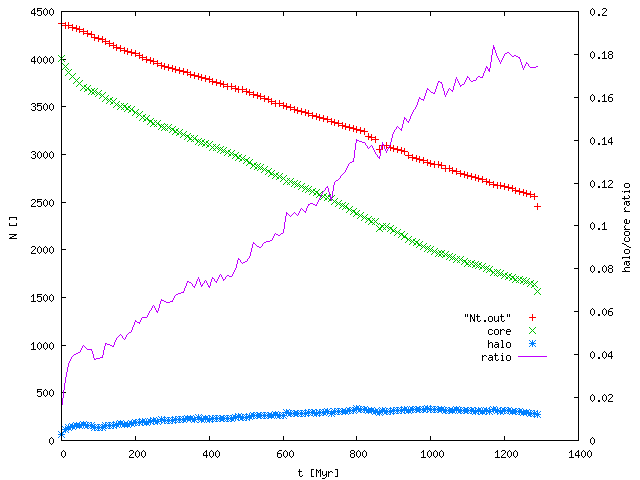 |
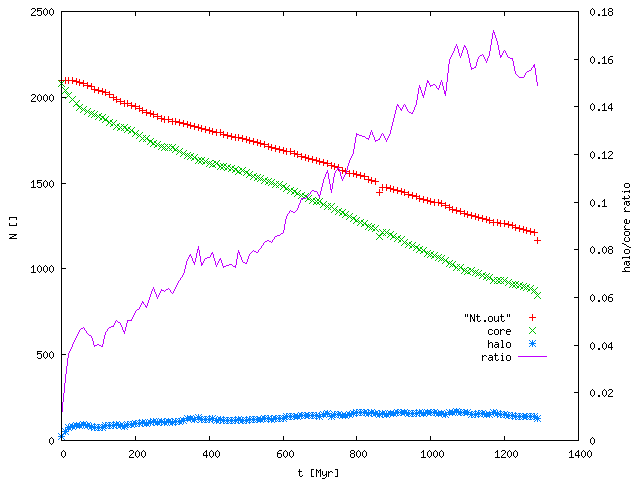 |
+ the SFD of the halo becomes steeper and that of the core shallower around D =~ 10 km
in course of the simulation (because the delivery is via the size-dependent Yarkovsky/YORP)
-> this naturally explains the observed difference between the SFDs
of the Eos family and Eos-like asteroids in the surroundings (!)
| simulation at t = 0 Myr, numbered asteroids only (!) |
t = 1300 Myr |
observed Eos-like (extracted from SDSS) |
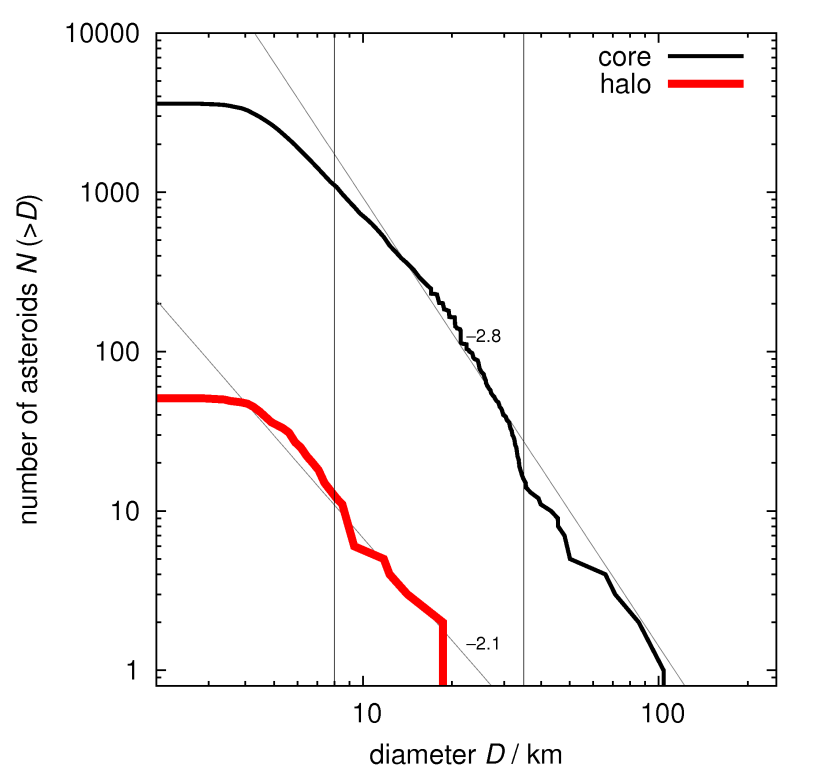 |
 |
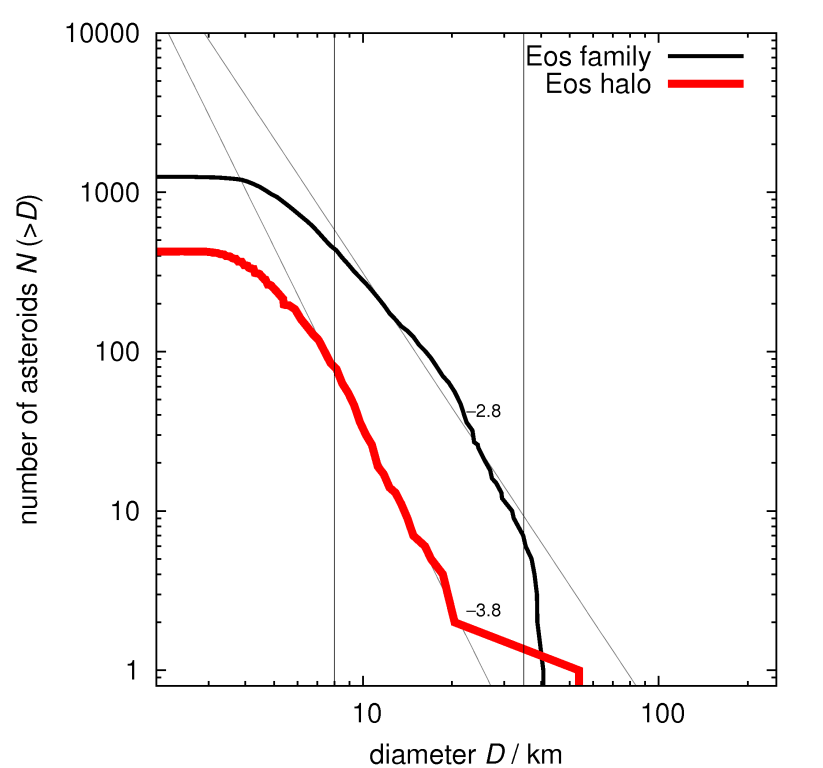 |
Note: The match between the simulated and observed SFD's is NOT perfect
- I should probably start the simulation with a steeper SFD
or a size-dependent velocity distribution, which may produce
more large asteroids located initially in the J9/4 resonance.
+ if the whole family would be 4 Gyr old, most (~ 90 %) of small bodies
would be elliminated due to the Yarkovsky drift (!),
unless they are replenished by a collisional cascade
<- simply extrapolate the N(t) dependence
+ initial geometry of the impact seems to be important too (!)
<- it may explain the observed asymmetry in the (a,e) plane
on left/right side of the J9/4 resonance
<- f =~ 135 to 180 deg is preferred, because for f =~ 0 to 45 deg
too many bodies fall into the z_1 resonance what creates
a prominent structure (visible even after 1.3 Gyr) which
is NOT observed today
| t = 0 Myr, f = 135 deg, v_max = 400 m/s |
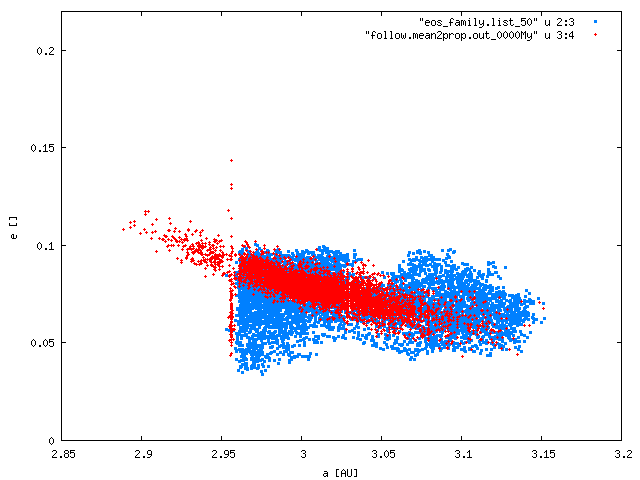
|
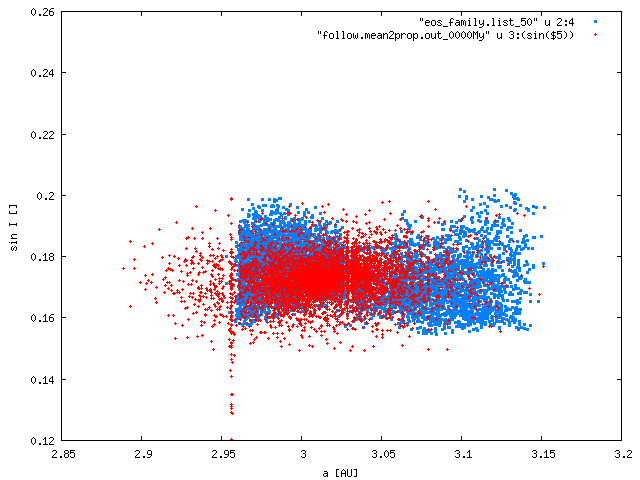
|
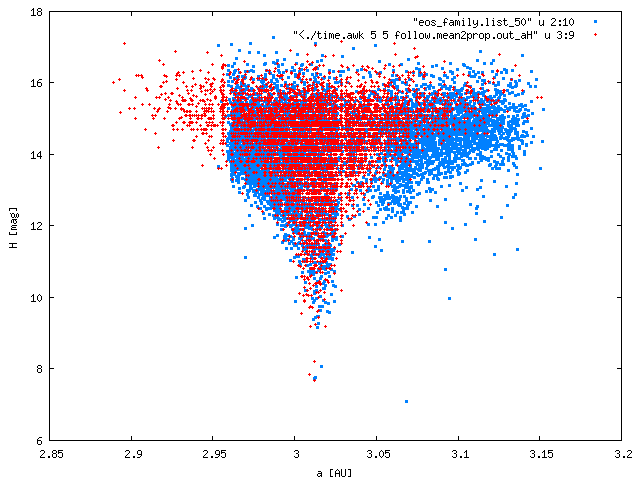
|
This second simulation is not yet computed upto 1.3 Gyr.
It also differs by the SIZE-DEPENDENT initial velocity field (refer to (a,H) figure).
Miroslav Broz,
miroslav.broz@email.cz,
Dec 14th 2010
